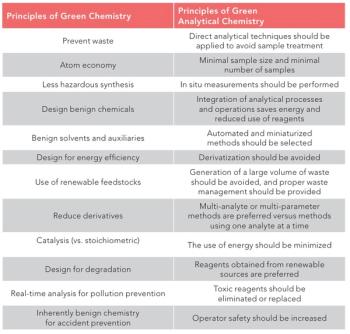
Column Properties’ Effects on GC Temperatures Measured
University of Bonn scientists monitored how column properties can affect the dynamics between characteristic and elution temperatures in gas chromatography (GC).
A recent study out of the University of Bonn in Bonn, Germany, led by Tillman Brehmer, monitored how column properties can affect the dynamics between characteristic and elution temperatures in gas chromatography (GC). Their findings were published in the Journal of Chromatography A (1).
GC method development can often be time-consuming; however, it is required to optimize chromatographic separation of analytes of interested while efficiently using FC instrument components (2). While this process can be complex, computer simulation can support the process. For computer simulation to be successful, retention data describing solute-column interactions is needed. The characteristic temperature is a very important retention parameter and directly related to retention, according to the ‘Distribution-centric 3-parameter model’, otherwise known as the ‘K-centric model.’ When K-centric retention parameters are known, separation problems can be solved for method development in analytical chemistry. These problems are solved using computer simulations or setting up retention maps for selecting stationary phases in two-dimensional gas chromatography (GCxGC). Knowing the characteristic temperature (Tchar) alone can be suitable for estimations and raw prediction of the elution order.
In this study, an empirical multivariate model was introduced, describing the correlation between the elution temperature (Telu)of a solute and its characteristic temperature (Tchar). Specifically, the scientists focused on different heating rates and initial temperatures to the correlation of Telu of an analyte and its Tchar in GC. A simple linear relationship could exist for several solutes, with the correlation consisting of three parts: a nearly constant elution temperature for low retained analytes; a linear correlation with a slope of one for highly retained analytes; and a transition area for analytes in between. An empiric equation to model these parts together was found; by using this equation, one can estimate the retention times of analytes from their characteristic temperature.
From there, a simulation model of GC and available retention data from a retention database was used to investigate correlations between Telu and Tchar for an expanded range of heating rates and initial temperatures. Furthermore, the simulation was used to investigate the influences of different properties of the separation column, such as different phase ratios and column geometries, like length and diameter, or various stationary phases, including SLB-5 ms, SPB-50, Stabilwax, Rtx-Dioxin2, Rxi-17Sil MS, Rxi-5Sil MS, ZB-PAH-CT, DB-5 ms, Rxi-5 ms, Rtx5 and FS5ms. The fit model proved valid for all investigated stationary phases, and the influence of the phase ratio to the correlation could be determined. As such, the model was expanded further.
The multivariate fit model shown in the first part of the study was modified to substitute the system’s depend heating rate (RT) with the dimensionless heating rate (rT). Then, it can be used for different column geometric properties, such as length and diameter. The phase ratio (β) as a property of film thickness was inserted in the regression model. At low dimensionless heating rates, β can be estimated from the linear branch (T0). The extended model can help estimate the characteristic temperature through the use of temperature-programmed measurements, and even at other heating rates than rT,0, the heating rate where Tchar and Telu are equal to each other. Estimations for Tchar were found to be possible at 20 ºC above the initial temperature, which is better than other relationships where Tchar could only be estimated 60 ºC above the initial temperatures. This shows that the model is capable of estimating start values for Tchar via temperature-programmed measurements. Furthermore, it can be part of a workflow for method development and auto-optimization.
These findings show a strong influence of Tchar to retention phenomena, such as elution temperature and retention time. Although lower influences could also be observed, Tchar proved to be the most important retention parameter because it was capable of predicting the elution order for a majority of compounds and temperature programs.
References
(1) Brehmer, T.; Boeker, P.; Wüst, M.; Leppert, J. Relation Between Characteristic Temperature and Elution Temperature in Temperature Programmed Gas Chromatography – Part II: Influence of Column Properties. J. Chromatogr. A 2024, 1728, 464997. DOI:
(2) Ford, K. GC Method Development. MAC-MOD Analytical 2024.
Newsletter
Join the global community of analytical scientists who trust LCGC for insights on the latest techniques, trends, and expert solutions in chromatography.




